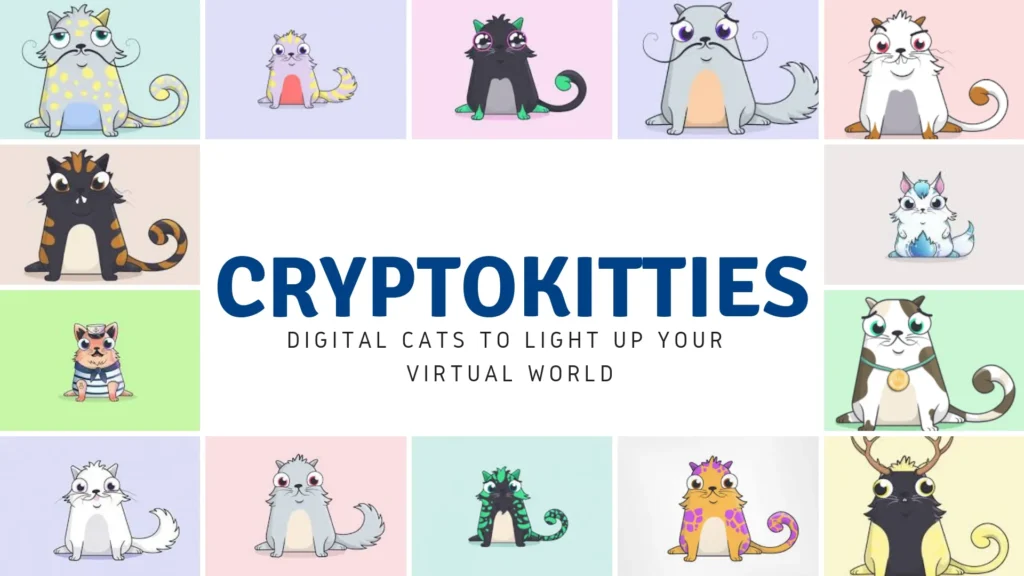In the ever-evolving landscape of digital innovation, Non-Fungible Tokens (NFTs) have emerged as a groundbreaking phenomenon, capturing the imagination of the tech-savvy and the creative minds alike. These unique digital assets, verified on the blockchain, redefine ownership and originality in the digital sphere, encompassing art, music, and gaming collectibles.
Exploring NFTs: Beyond the Basics
At their core, NFTs are digital tokens that bring a unique identity to virtual or real-world assets, making each token irreplaceable and one-of-a-kind. This uniqueness is particularly transformative in the digital art scene, where creators are leveraging blockchain technology to monetize their works in unprecedented ways, achieving sales in millions at renowned auction houses.
The concept of NFTs gained significant traction with CryptoKitties in 2017, a blockchain game that allowed players to collect and breed digital cats, showcasing the potential of NFTs beyond mere collectibles. The following years saw the NFT market expand exponentially, with sales hitting over $250 million in 2020, signaling a robust and growing interest in digital ownership and collectibility.

How NFTs Function: The Technical Side
Unlike traditional cryptocurrencies, NFTs are indivisible and cannot be exchanged on a like-for-like basis, making them ideal for representing unique items. The Ethereum blockchain, among others, facilitates the creation and transaction of NFTs, ensuring the authenticity and ownership of digital assets through smart contracts and unique identifiers.
Diverse Applications of NFTs
NFTs are making waves across various sectors:
- Art: Digital artists are finding new avenues for expression and monetization, with programmable art that can evolve over time.
- Fashion: The integration of NFTs in fashion is combating counterfeiting, offering verifiable ownership of items.
- Education and Licensing: NFTs streamline the verification process for certifications and licenses, enhancing efficiency and security.
- Sports: From authenticating memorabilia to ticketing, NFTs are addressing counterfeit issues in sports.
- Gaming: The gaming industry has embraced NFTs, enriching in-game experiences with unique, tradeable items.
Comparing NFTs with Traditional Assets
The value proposition of NFTs lies in their uniqueness and the authenticity they bring to digital assets, contrasting sharply with the interchangeable nature of cryptocurrencies and fiat currencies. This non-fungibility is akin to the world of collectibles, where the distinct characteristics of an item determine its value, setting NFTs apart as a new asset class in the digital economy.
The Economic Landscape of NFTs
The burgeoning NFT market is replete with stories of astronomical sales, drawing both enthusiasm and skepticism. High-profile transactions, such as digital artworks by artists like Grimes and Beeple, have spotlighted the potential and the environmental considerations of NFTs, sparking debates on their long-term viability and impact.
NFTs: A Cultural and Economic Paradigm Shift

NFTs transcend their technological foundation, influencing cultural narratives and economic models. The democratization of art and creativity, coupled with the potential for direct monetization, heralds a shift towards a more inclusive and equitable digital economy, where creators retain greater control and receive ongoing recognition for their contributions.
The Inherent Value of NFTs: Scarcity and Creativity
The principle of scarcity plays a crucial role in the valuation of NFTs, introducing the concept of digital rarity. This scarcity, combined with the creative merit of the asset, contributes to the perceived value of NFTs, challenging traditional notions of ownership and value in the digital realm.
Embracing NFTs: The Future of Digital Assets
As the NFT landscape continues to evolve, it offers a canvas for innovation, allowing artists, gamers, and collectors to explore new forms of digital expression and ownership. The intersection of technology and creativity within the NFT ecosystem is fostering a vibrant community eager to explore the boundaries of what is possible in the digital age.
Navigating the NFT Marketplace
Engaging with the NFT marketplace requires an understanding of the auction and direct sale mechanisms, with platforms like OpenSea.io and Rarible facilitating the buying and selling of these digital assets. Prospective buyers and sellers must navigate the ecosystem with an informed perspective, recognizing the potential and challenges inherent in this rapidly evolving market.
In conclusion, NFTs represent a significant shift in the digital landscape, offering novel opportunities for ownership, creativity, and investment. As the market matures, the ongoing dialogue around NFTs will undoubtedly shape the future of digital assets, underscoring the need for continued exploration and understanding of this dynamic domain.

